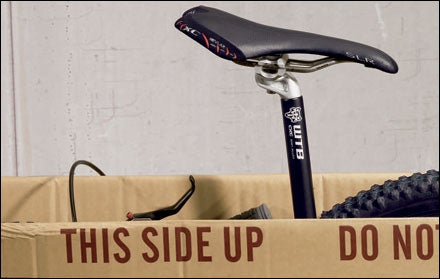BIKES, LIKE CELL-PHONE PLANS, should come tailored to your needs. That’s what you finally get in 2006: a slew of highly refined models suited to your riding preferences. Want a road ride? Now there are pure racers, comfort bikes built for speed, and everything in between. Mountain bikes, you say? You’ll choose between single-speeds and 29ers and all-mountain machines.
Don’t panic. We’ve done all the hard work for you. We loaded up 26 bikes and headed to Tucson, Arizona, where we logged laps in sandy arroyos, on jangling singletrack, and along ribbons of desert pavement until we settled on the finest rigs in each category. In the pages ahead you’ll find two picks in each class: the rigs you lust after—decked-out dream rides for cash-flush connoisseurs—and value-laden alternatives that are a must for anyone on a modest budget. And unlike with cell-phone plans, you’ll never have to ration your time on these rides.
Bianchi 928 L’Una
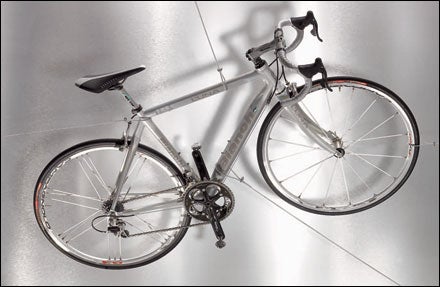
THE CARBON-FIBER REVOLUTION CONTINUES. As engineers refine the way carbon is constructed and shaped, road bikes get wispier and tougher. When combined with more traditional materials like aluminum and titanium, strategically placed carbon tubing and components save weight, boost pedaling efficiency, and improve ride quality. These bikes are built for speed; providing torque is still up to you.
BIANCHI 928 L’UNA / $5,300, 17.1 lbs
Why It’s Cool: The Ferrari of road bikes: blindingly fast, impeccably equipped, and designed to turn heads.
The Ride: The L’Una lives up to Bianchi’s 121-year heritage of building dream machines for Italy’s top racers. If traditional carbon is sexy, the L’Una—the only white-carbon bicycle on the market—is an Italian supermodel. Spec’d with a glassy-smooth Campagnolo Chorus drivetrain, Bianchi’s own carbon crankset, and featherweight Campagnolo Eurus wheels, this rig is race-ready out of the box. On the road, the sculpted carbon fiber soaked up the chatter of small bumps, dips, and cracks. The extra-large bottom bracket may look overbuilt, but it didn’t flex at all on a 15-mile hill climb, translating each pedal stroke into pure power. On the steep 3,500-vertical-foot descent, the L’Una hugged high-speed mountain curves, inspiring confidence when the pavement turned rough.
Right Bike If: You race (even on solo rides), and you want a ride that matches your ambition. Sizes: 50, 53, 55 (tested), 58, and 61 cm;
LeMond Chambery
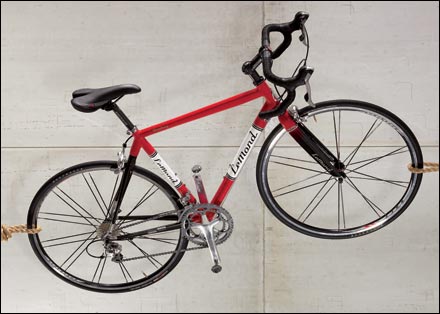
LEMOND CHAMBERY / $2,100, 18.9 lbs
Why It’s Cool: Traditional geometry and classic European styling with less weight, thanks to the aluminum-carbon-hybrid frame.
The Ride: Coming from a company that built its reputation on steel, the Chambery—with teardrop-shaped aluminum tubing mated to a carbon-fiber fork and stays—could be seen as treason. But this bike preserves LeMond’s signature long cockpit and easy-on-the-back riding position, while updating its road feel with the lively crackle of aluminum. The Chambery comes with Shimano Ultegra drivetrain and brakes, rounding out a solid-steering, stable platform that still feels peppy. Stomp on the pedals and the bike immediately surges forward, even on steep hills. But the Chambery seemed happiest on the wide-open road, smoothing out the miles and nearly putting testers to sleep with its hypnotic hum. That makes it the perfect choice for epic outings.
Right Bike If: You measure your rides in hours, not miles. Sizes: 49, 51, 53, 55, 57 (tested), 59, and 61 cm;
Santa Cruz Nomad

BUYING A MOUNTAIN BIKE used to mean choosing between low weight and long-travel suspension. No more. Thanks to improved shock technology and trimmed-down components and frames, manufacturers are churning out bikes light enough for cross-country riding that still soak up bumps with six inches of travel in the shocks. At around 30 pounds, all-mountain rigs aren’t exactly willowy, but they’re light enough to power up steep climbs. And on the descent, well . . . that’s still the best part.
SANTA CRUZ NOMAD / $3,850, 31.4 lbs
Why It’s Cool: Laid-back geometry and gracious trail manners make this versatile model a one-bike quiver.
The Ride: With a Fox DHX Air 5.0 shock in the back and a burly Fox Talas 36RC2 fork, the Nomad is set up for a pillowy six-plus inches of travel at both ends. The active suspension, courtesy of Santa Cruz’s virtual-pivot-point (VPP) linkage, prevents the bike from bobbing when you pedal, thereby reducing energy loss. With its slack angles, tight cockpit, and upright position, riding the Nomad feels like riding a La-Z-Boy designed by Porsche. Steering while climbing is accordingly slow, but the bike tracked well and provided great hookup on loose, rock-strewn ascents. Point the nose down and that relaxed feel becomes confidence: Even at frightening speeds, the Nomad doesn’t flinch from its course.
Right Bike If: You like launching big drops, bombing the downhill course, and still keeping up with the cross-country crew. Sizes: 21.9, 22.8, 23.8 (tested), and 24.5 in;
Rocky Mountain Slayer 30
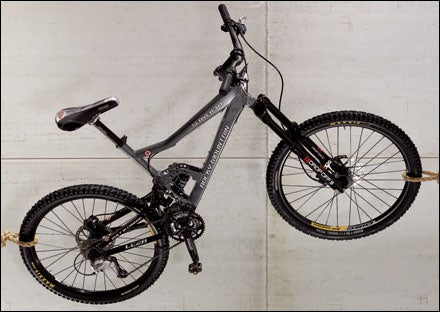
ROCKY MOUNTAIN SLAYER 30 / $2,200, 34.3 lbs
Why It’s Cool: A hand-built frame with superb all-mountain performance at a closeout price.
The Ride: The Slayer has been redesigned this year to perfectly blend uphill efficiency with downhill flash. The new frame looks like Frankenbike, with a double-braced main triangle sporting a new single-pivot LC2R suspension system—six inches of rear travel when paired with the Fox Float RP3 shock. The nuts and bolts for this strange creation are a solid mix of Shimano LX and XT drivetrain parts, Hayes HFX 9 disc brakes, and Marzocchi’s six-inch custom Drop Off III fork. The unusual range of components harmonizes when this bike hits the dirt. True, the Slayer is not too bad on the climbs, but it really comes alive when the trail drops. The first impression of being cocked back and perched up high disappears on the descent, as the bike’s low center of gravity provides firm, solid handling.
Right Bike If: Your allegiance lies with fast downhills, but you still grasp the concept of a pedal stroke. Sizes: 15, 16.5, 18, 19 (tested), 20.5, and 22 in;
Cervélo P3 Carbon
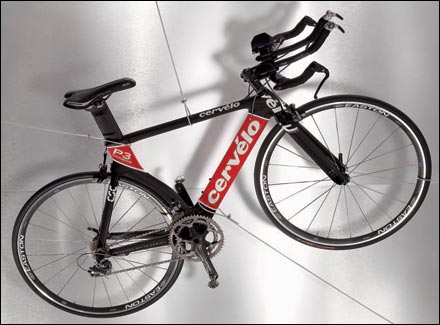
WITH THEIR AERO WHEELS AND SLEEK DESIGN, tri bikes—time-trial models favored by dedicated triathletes—will get any cyclist salivating. No surprise they’re one of the industry’s fastest-growing categories. Unique geometry improves power delivery and creates a better drop position, while the forward seating engages your hamstrings, keeping your quads fresh for that end-of-race run. Unlike road bikes, which are designed for more control while riding in a pack, these purebreds are built for one thing—to make you faster on those long, hard solo rides.
CERVÉLO P3 CARBON / $4,500, 18.4 lbs
Why It’s Cool: This Canadian-built Tour de France stage winner is lighter on the wallet than other high-end carbons.
The Ride: When American Dave Zabriskie beat Lance Armstrong in the 2005 Tour de France prologue, triathletes took note: Zabriskie rode to victory on a P3 Carbon. Equally impressive, the 2006 frame is nearly half a pound lighter than last year’s, and still makes diehards swoon, with luscious curves, one-piece carbon layup, and Cervélo’s distinctive rear-wheel cutout. The P3 comes spec’d with Shimano Dura-Ace, VisionTech aero bars, a bladed front fork, and a dual-setting seatpost that adjusts for different riding positions. The P3’s shallow Mid-V Easton Vista rims are fine for training, but to make this thoroughbred nearly unbeatable, invest in a higher-profile pair of rims.
Right Bike If: You spend more time at triathlons than on vacation. Sizes: 48 (650c wheels), 51, 54 (tested), 56, 58, and 61 cm;
Trek Equinox 9
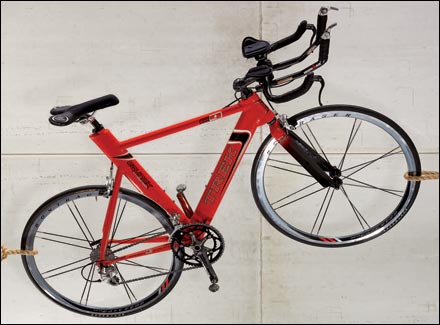
TREK EQUINOX 9 / $2,200, 20.5 lbs
Why It’s Cool: You get wind-tunnel-tested aerodynamics, carbon-fiber add-ons, and a responsive aluminum frame—without busting your bike budget.
The Ride: Trek’s top-of-the-line aluminum tri bike excels in handling and control, and comes outfitted with Bontrager’s carbon fork and bars. A solid mix of Shimano components stretch your dollars even further. Unlike some similarly priced options, it’s race-ready, so you won’t be lured into spending more coin on accessory upgrades before you leave the shop. On the road, the Equinox provides powerful acceleration; credit the stiff frame, bladed tubing, and Bontrager Race Lite Aero wheels. Alongside other, more expensive rides tested, the Equinox held its own, thanks in part to its bladed tubes and a comfortable cockpit topped with Bontrager Bullhorn and Profile Design clip-on aero bars.
Right Bike If: Money is tight but you want a durable tri bike with lightweight carbon gadgetry. Sizes: 50, 52, 54 (tested), 56, 58, and 60 cm;
Moots Uno YBB
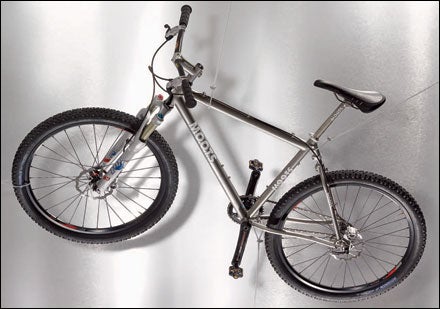
WHEN MOST MOUNTAIN BIKES are stacked with 27 gears, why are so many cyclists turning to single-speeds? Easy: They’re light and simple, fun to ride, and whip you into a better, stronger cyclist. Granted, you may break a serious sweat on rides that were previously cake on your geared bike. But that’s the point: There’s a raw pleasure in testing your limits—and using just one little gear to burn off your buddy on his overstuffed mountain hog.
MOOTS UNO YBB / $5,100, 21 lbs
Why It’s Cool: This ridiculously lightweight titanium ride will win over the staunchest single-speed skeptics.
The Ride: The Uno is nearly as svelte as a road bike, making the midrange 36×16 gearing easier to push on climbs than the competition. The hand-built ti frame is stiff and smooth, with clean welds NASA would envy. The YBB softtail takes the edge off the rough stuff and keeps the rear wheel connected to the dirt on ascents, meaning you stay in the saddle longer and conserve precious energy. Downhill, the Uno excels on tight, swoopy, banked singletrack. The stable-platform Fox F80X fork damps three inches on rocky descents but goes rigid when the trail turns smooth. And the disc-brake-ready slider dropout makes it easy to tension the chain. It also lets you sub in a derailleur-compatible hanger in case you ever lose the single-speed mojo, making this frame a lifelong investment.
Right Bike If: You’re already a single-speed convert and you want the finest ride available. Sizes: custom and 12, 14, 16, 17, 18 (tested), 19, 20.5, and 22 in;
Bianchi W.U.S.S.
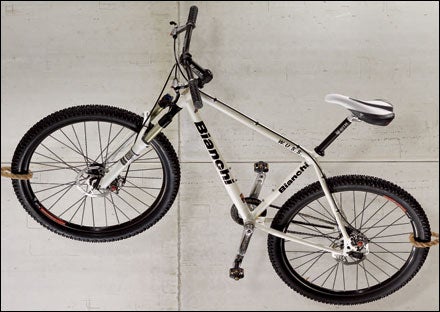
BIANCHI W.U.S.S. / $1,340, 23.3 lbs
Why It’s Cool: Who doesn’t want a hard-cranking machine with Italian panache at a rock-bottom price?
The Ride: It may be decked in pearly paint—a defiant middle finger to pragmatism—but the W.U.S.S. is no softy. This “White Ultimate Single Speed” is about fast, all-out trail assault. Aggressive geometry makes for responsive, cross-country-inspired handling, and the Easton Ultralite aluminum provides a ride with plenty of snap. At 23.3 pounds, the W.U.S.S. feels light and springy on the climbs. On flat, never-straight singletrack circuits and whooping, chutes-and-ladders-style trails, we couldn’t stop smiling. Even on sharp, knotty downhills, the W.U.S.S. tracked a line surprisingly well, due in part to the hard-to-beat three-plus inches of cushion in the RockShox Reba Team fork. The Avid mechanical disc brakes are sweet, though they detract from the overall minimalist aesthetic.
Right Bike If: Your bike quiver lacks a fast, fun, abuse-loving one-speed. Sizes: 13.5, 15.5, 17.5, 19.5 (tested), and 21.5 in;
Salsa Dos Niner
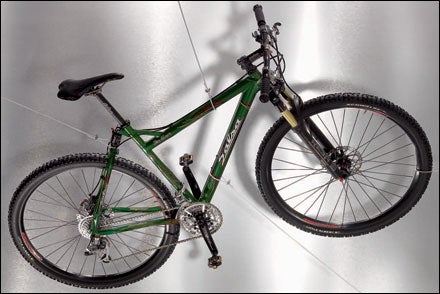
TO WRAP YOUR HEAD AROUND THE BENEFITS of 29-inch wheels, consider the monster truck. The bigger the wheel, the bigger the stuff it can roll over. Which explains the rise of the 29er as an alternative to the 26-inch-wheel mountain bike. These rigs generally have a higher bottom bracket for better clearance; hold their momentum better for less effort on long rides; and boast a longer wheelbase for a more stable ride. What more could you ask for than wheels that never want to stop?
SALSA DOS NINER / $3,600 (as tested), 26.5 lbs
Why It’s Cool: The sharp reflexes of a cross-country race frame with a much plusher ride than a standard-wheeled softtail.
The Ride: When you first mount the Dos Niner, it’s hard not to feel like a circus clown on a velocipede. But the feeling melts away as the bike gobbles up every obstacle in its path. Credit the suspension: The RockShox Reba Race fork up front, with at-your-fingers lockout, gives four inches travel, while the one-inch-travel Salsa Relish shock cushions the rear. All that softness and the stiff frame—built from scandium, a high-strength aluminum alloy—still rockets forward at the slightest press of the pedals. On steep, loose talus—portaging terrain on a 26-inch rig—the Niner’s extended wheelbase prevented endoes. On gentler grades, it soaked up logs and babyheads. And in sand patches, the big wheels floated on top, leaving my little-wheeled partners spinning comically, clownishly slow.
Right Bike If: You want to ride, with ease, where others walk. Sizes: 16, 18, 20 (tested), and 22 in;
Gary Fisher Paragon
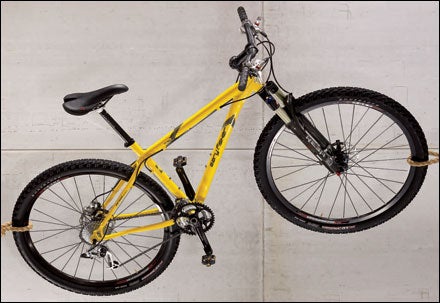
GARY FISHER PARAGON / $1,760, 25.6 lbs
Why It’s Cool: No-nonsense, all-out performance from the original 29-inch-bike builder.
The Ride: You can’t talk about 29ers without mentioning Gary Fisher—he debuted the first mass-production models five years ago, and he’s been exhorting the industry toward bigger wheels ever since. That expertise shows in the Paragon, the working man’s 29er, built of flared aluminum tubing and decked with a range of choice parts. The lineup is straight value: a primarily SRAM X-9 drivetrain, Avid Juicy 7 hydraulic disc brakes, a RockShox Reba Race front fork, and Bontrager bits and pieces throughout. Unlike some 29ers, the Paragon’s sloping top tube gives plenty of stand-over clearance, while the steering is surprisingly nimble. Compared with most hardtails, the Paragon rides soft and comfortable as the extra circumference eats up small bumps and ruts. Among our hardtail disciples, the performance offered further proof that 29ers aren’t going the way of toeclips anytime soon.
Right Bike If: You want to join the big-wheel phenomenon without breaking the bank. Sizes: 15.5, 17.5, 19 (tested), and 21 in;



